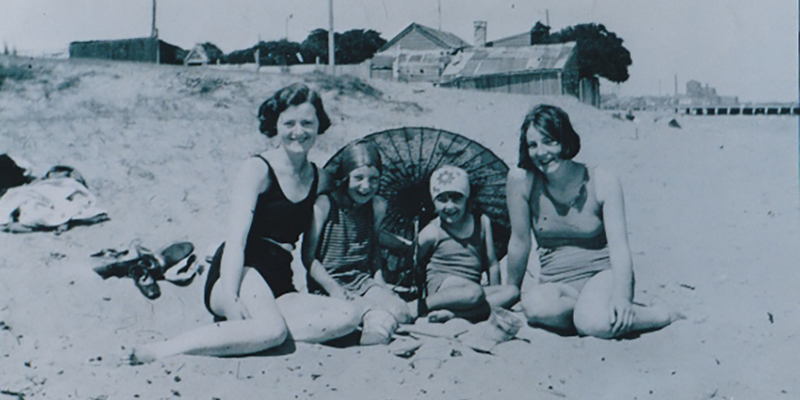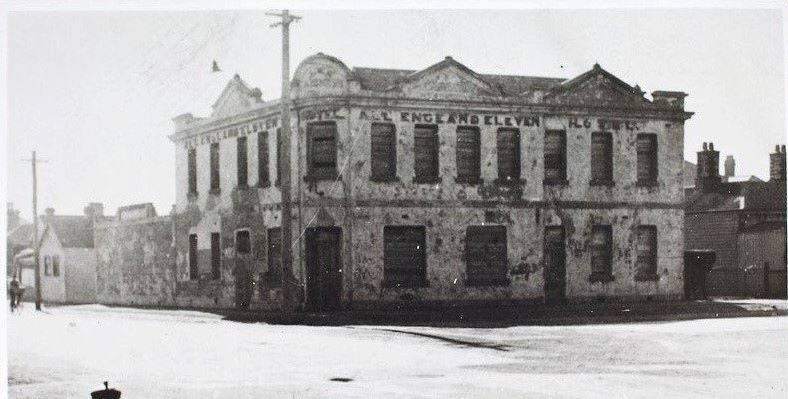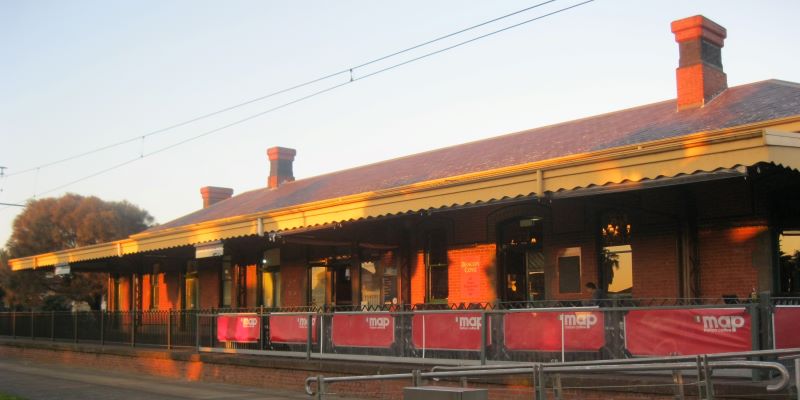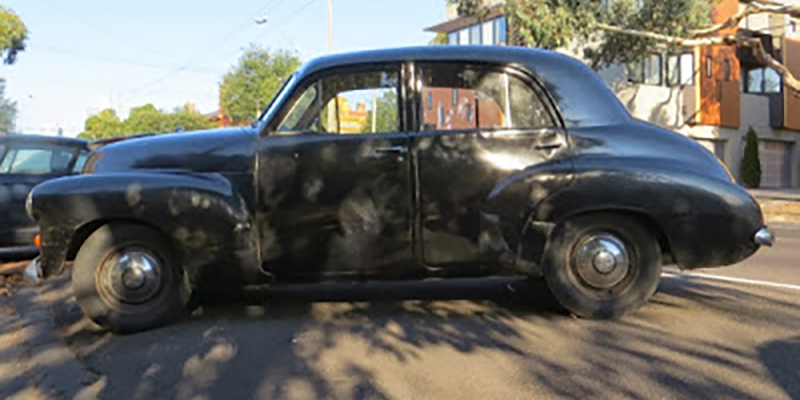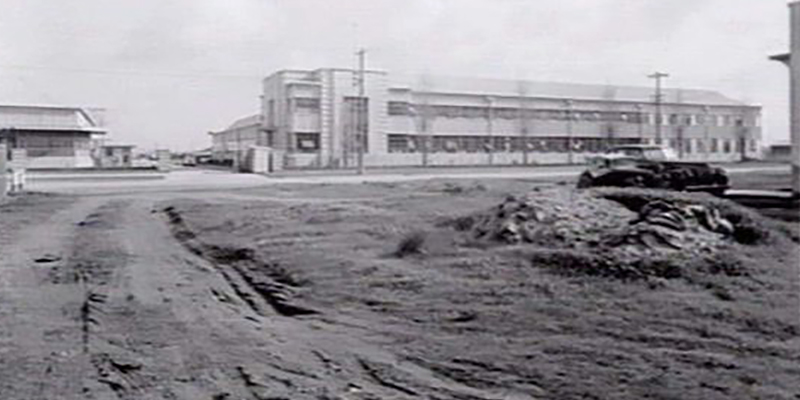For these hot days, a summer photo.
This is a favourite picture from the PMH&PS collection. While charming in itself, there is much to be gleaned from the background. It is taken approximately where the Life Saving Headquarters at Sandridge is today. You can see a house in the immediate background with Princes Pier and the chimney of the Starch Factory…
